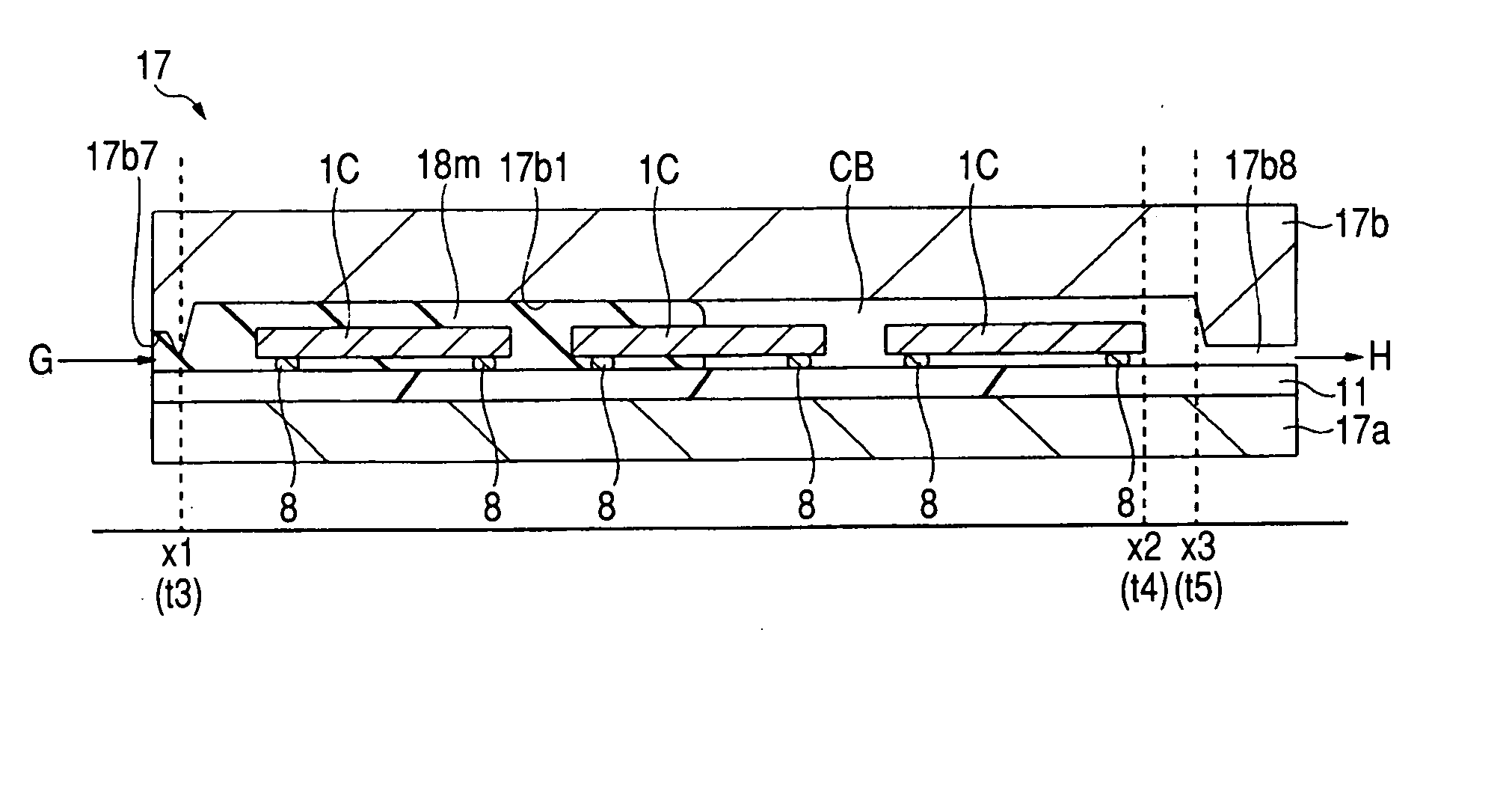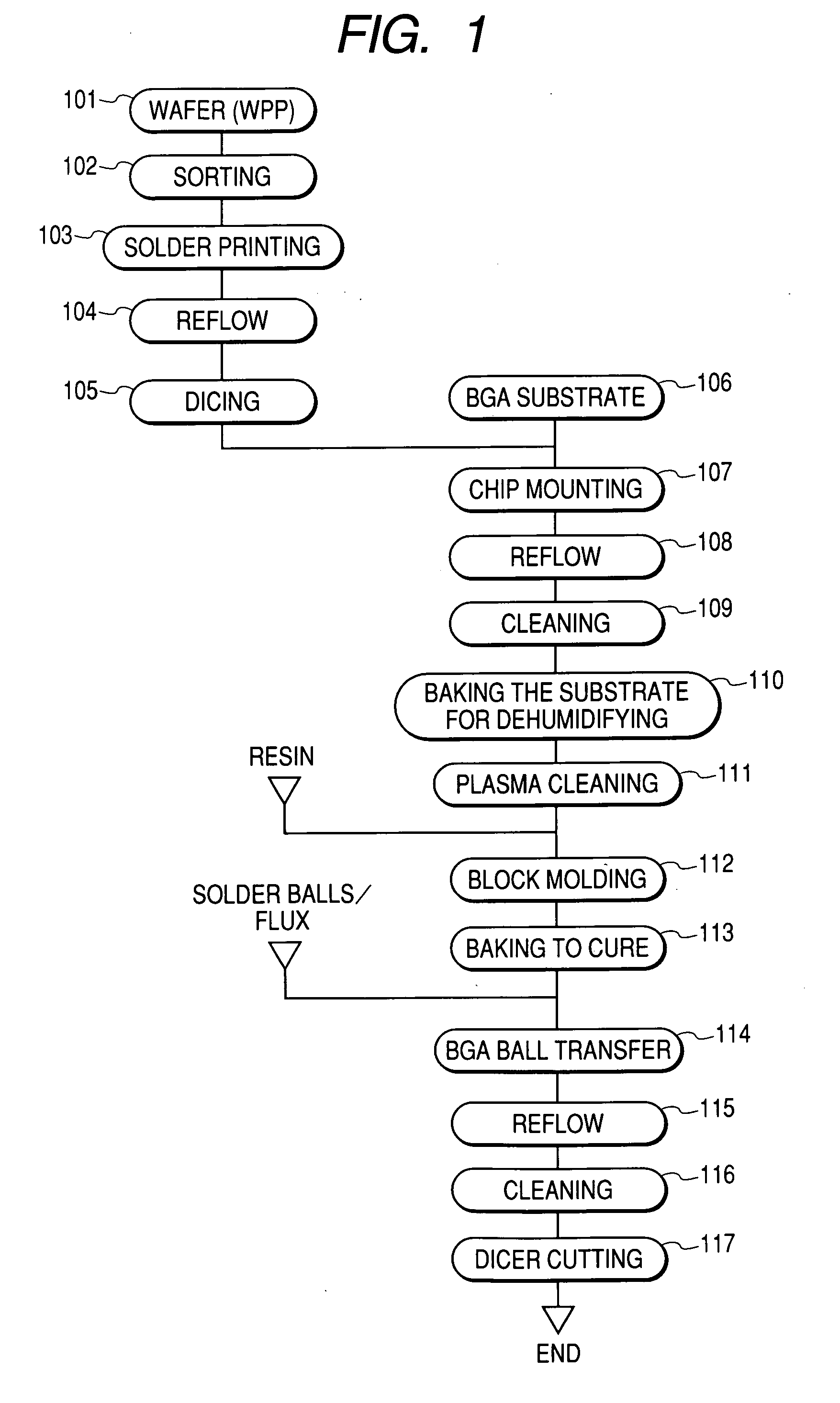Manufacturing method of a semiconductor device
a manufacturing method and semiconductor technology, applied in the direction of individual semiconductor device testing, semiconductor/solid-state device testing/measurement, instruments, etc., can solve the problems of low productivity, high cost of semiconductor devices, and high cost of sealing materials, so as to improve the yield in the sealing step of semiconductor devices.
- Summary
- Abstract
- Description
- Claims
- Application Information
AI Technical Summary
Benefits of technology
Problems solved by technology
Method used
Image
Examples
first embodiment
[0068] An example of a semiconductor device manufacturing method according to an embodiment of the present invention will be described below with reference to FIGS. 2 to 24 and in accordance with the process flow shown in FIG. 1.
[0069] First, a description will be given of steps (Steps 101 to 105 in FIG. 1) up to the provision of semiconductor chips (hereinafter referred to simply as “chips”).
[0070]FIG. 2 is an entire plan view of a wafer 1W after a wafer process. The wafer process, which is also called a pre-process, generally involves such operations as forming elements and wiring layers on a main surface of the wafer 1W having been subjected to mirror polish, forming a surface protecting film, and making it possible to conduct an electrical characteristic test of each of plural chip ICs formed on the wafer 1W, with use of a probe or the like. For example, the wafer 1W is formed in a generally circular shape in plan, and rectangular chip ICs are regularly arranged side by side o...
second embodiment
[0113] In this second embodiment a description will be given about the technique of molding plural chip ICs flip-chip mounted on a substrate matrix 11 with use of a molding die having movable air vents.
[0114]FIG. 38 is a plan view of a molding apparatus 17 used in this second embodiment, showing a lower die 17a and a lower die 17b in a mutually superimposed state, FIG. 39 is a plan view of a molding surface of the upper die 17b in the molding apparatus 17 shown in FIG. 38, FIG. 40 is a sectional view taken on line J-J in FIG. 38, FIG. 41 is a sectional view taken on line J-J in FIG. 38 in a clamped state of a substrate matrix 11, FIG. 42 is a sectional view taken on line K-K in FIG. 38, FIG. 43 is a sectional view taken on line K-K in FIG. 38 in a clamped state of the substrate matrix 11, and FIG. 44 is an enlarged plan view of a region L shown in FIG. 38. The construction of the lower die 17a in the molding apparatus 17 used in this second embodiment is the same as in the first em...
PUM
 Login to View More
Login to View More Abstract
Description
Claims
Application Information
 Login to View More
Login to View More - R&D
- Intellectual Property
- Life Sciences
- Materials
- Tech Scout
- Unparalleled Data Quality
- Higher Quality Content
- 60% Fewer Hallucinations
Browse by: Latest US Patents, China's latest patents, Technical Efficacy Thesaurus, Application Domain, Technology Topic, Popular Technical Reports.
© 2025 PatSnap. All rights reserved.Legal|Privacy policy|Modern Slavery Act Transparency Statement|Sitemap|About US| Contact US: help@patsnap.com



